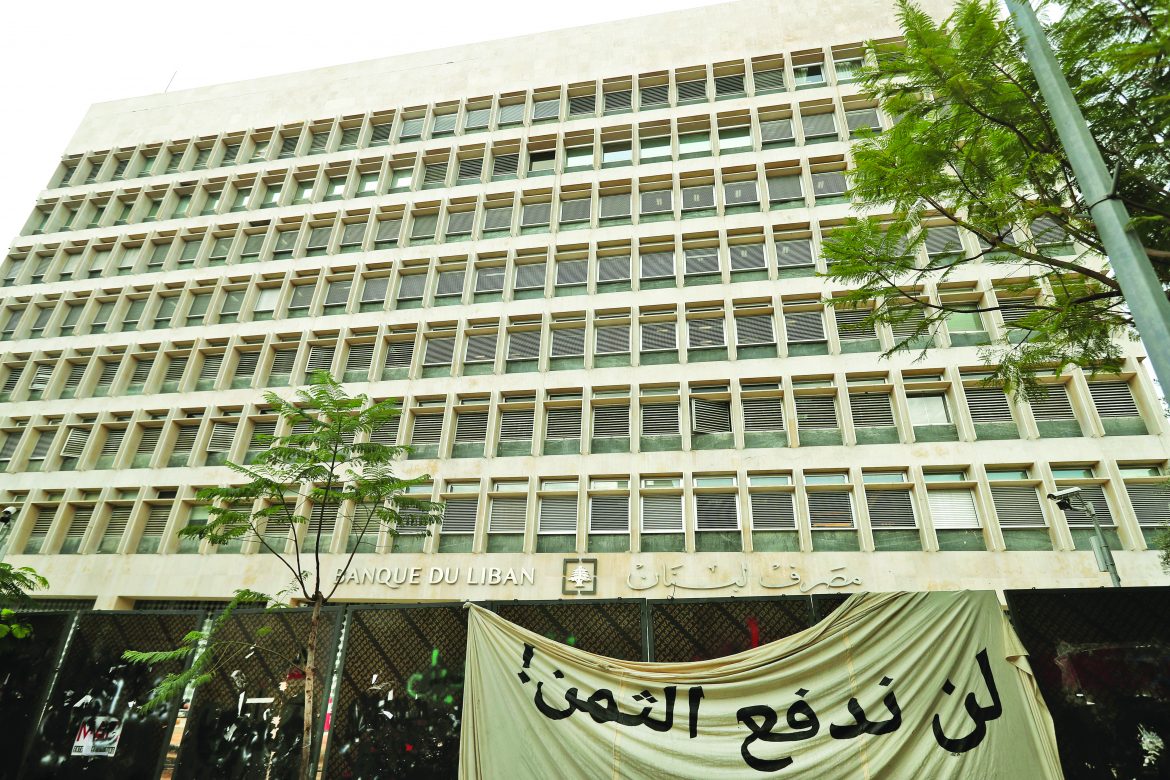No way out?

This picture taken on November 27, 2019 shows a banner in Arabic reading "we will not pay the price" hanging outside the headquarters of the Banque du Liban (Lebanese Central Bank) in the capital Beirut, referring to the worsening economic situation. - In a country grappling with a dual political and economic crisis, thousands of Lebanese say their jobs are threatened. Activists have started to denounce illegal lay-offs and called on the labour ministry to intervene. (Photo by JOSEPH EID / AFP)
